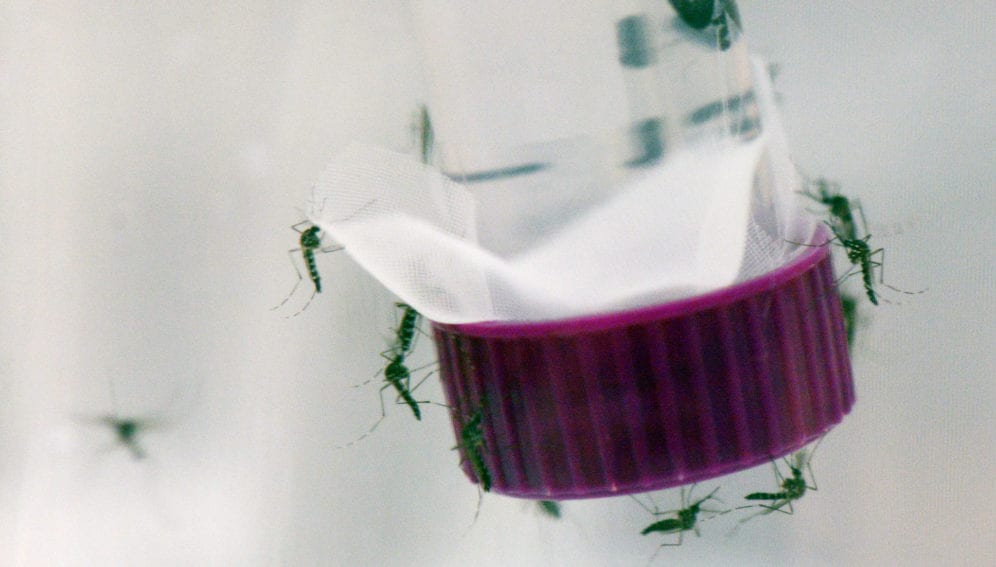01/04/19
Faster and cheaper test to detect Zika

By: Helen Mendes
Send to a friend
The details you provide on this page will not be used to send unsolicited email, and will not be sold to a 3rd party. See privacy policy.
[CURITIBA, BRAZIL] Brazilian researchers say they have developed a simpler, cheaper and faster method to diagnose the Zika virus, that can be used in even the most remote places, without need for laboratory equipment or trained staff.
The technology, called loop-mediated isothermal amplification (RT-Lamp), has the benefit of being simpler than the polymerase chain reaction (PCR) currently used to detect Zika, according to authors of a paper published in Nature Scientific Reports.
RT-Lamp amplifies the viral genome of the biological sample, which can be either of the mosquito or the patient, to detect the virus.
“It is a method that has enormous value. The technology is good, is really very sensitive, specific and low cost.”
Edison Durigon, Institute of Biomedical Sciences of the University of São Paulo
While the PCR test costs around US$10, the new method has an individual cost of around US$ 0.25, said Lindomar Pena, one of the authors of the paper and a researcher at the Oswaldo Cruz Foundation (Fiocruz), a biological sciences research centre in Brazil.
Real-time PCR is the gold standard for the detection of the virus, but it requires expensive equipment, specialist staff, and laboratories with good infrastructure, said Pena, adding: “This is not the reality in Brazil.”
Zika virus is transmitted mainly by Aedes mosquitoes and has been linked with microcephaly, a condition where a baby is born with a small head. It spread rapidly across Latin America in 2016 and 86 countries have reported evidence of the infection, according to the World Health Organisation.
Edison Durigon, professor of the Institute of Biomedical Sciences of the University of São Paulo, who did not participate in the study, explained that RT-Lamp technology has long been used for other diseases, such as Ebola, but not for Zika.
“It is a method that has enormous value. The technology is good, is really very sensitive, specific and low cost,” Durigon told SciDev.Net.
The test involves macerating the mosquito and placing it in a test tube with a reagent. After 20 to 40 minutes you observe the colour of the mixture; if it turns orange, the result is negative, while yellow indicates the presence of the virus.
While the traditional Zika test takes around five hours and allows tens of samples to be screened together, with the RT-Lamp technique only one sample is tested at a time, which could be seen as a drawback.
The study’s authors are convinced, however, that the advantages outweigh any limitations.
“A great benefit is the sensitivity of the technique, that is the minimum quantity of virus it can detect,” said Pena. In some cases, the PCR test – carried out on the patient or the mosquito – gives a negative result, because the quantity of the virus is very low.
The Brazil study used 60 samples of mosquitoes infected either naturally or in the lab with the Zika virus, as well as dengue, yellow fever and chikungunya.
Researchers found the method was suitable for detecting Zika, without cross-reaction with other kinds and are now testing it with samples of human serum, saliva, semen and urine.The authors of the study requested a patent of the technique before publishing the results.
Pena hopes that the technology will eventually be transformed into a commercial kit. “We have worked with other tests and this one made us really enthusiastic, because of its simplicity,” he added.
Durigon agrees that the tool has enormous commercial potential, especially if used for diagnosing patients, besides its use for mosquito monitoring.
The paper can be read in full in Nature Scientific Reports
This piece was produced by SciDev.Net’s Latin America and Caribbean edition













